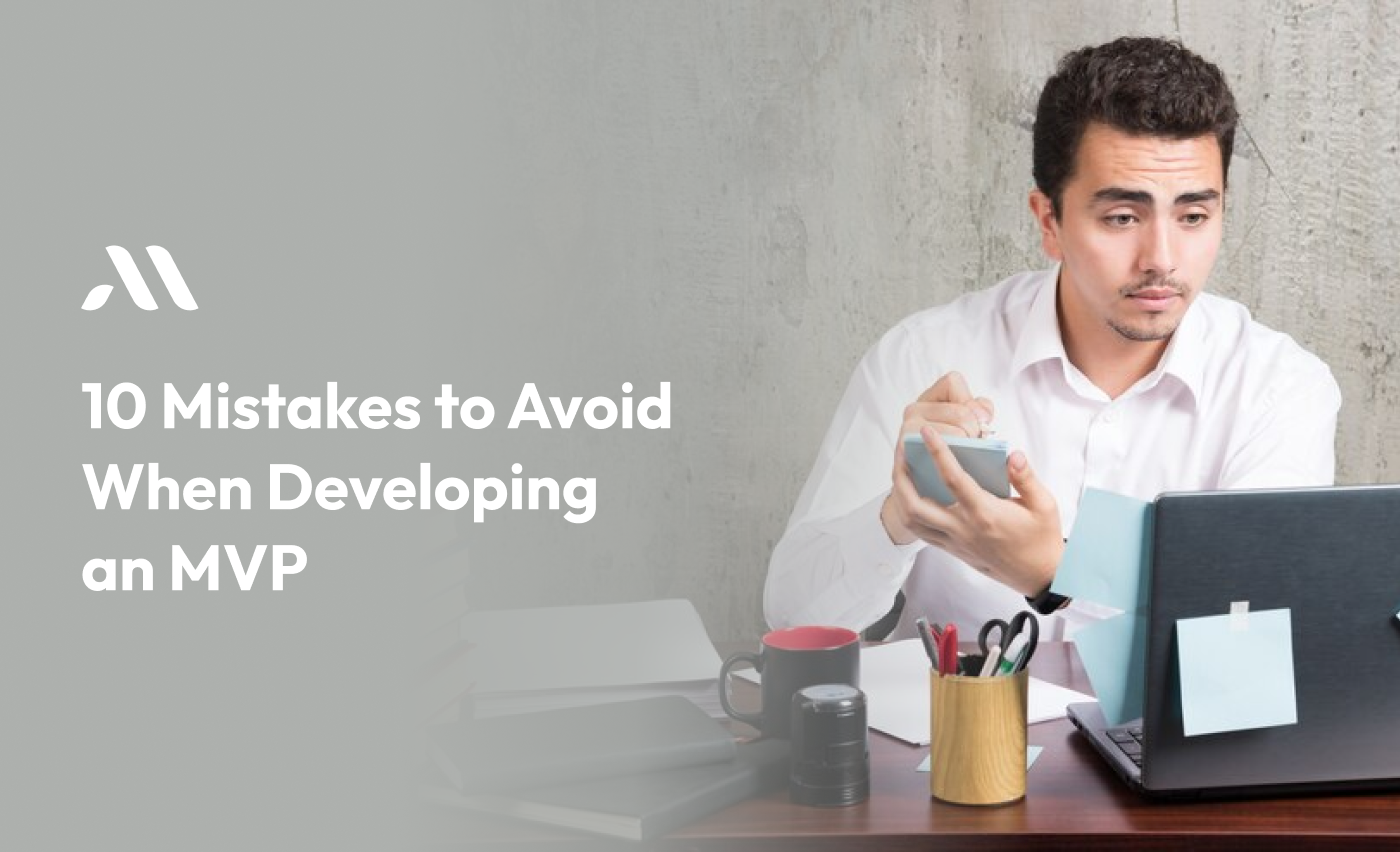When developing an MVP (Minimum Viable Product), it’s easy to make mistakes that can delay your progress or even cause your project to fail. An MVP is a simple version of your product that has just enough features to satisfy early users. By testing your idea early, you can save time and money before fully committing to a larger project. However, if you’re not careful, you can fall into some common traps.
According to a report by Failory, around 90% of startups fail, with many of these failures attributed to mistakes made during the MVP development phase. Avoiding these common pitfalls will put you ahead of the curve and on the path to success.
In this article, we’ll cover the 10 mistakes to avoid when developing an MVP. Avoiding these mistakes will help you stay on track and increase your chances of success.
Mistakes to Avoid When Developing an MVP
1. Skipping Market Research
Before developing an MVP, it’s crucial to do market research. Understanding your target audience, their needs, and what competitors are offering is essential. Skipping this step can lead to a product that no one wants. According to a survey by CB Insights, 42% of startups fail because there’s no market need for their product.
Tip: Always validate your idea with potential customers before starting MVP development. This will save you from wasting resources on an unneeded product.
2. Overloading the MVP with Features
One of the biggest mistakes when developing an MVP is trying to include too many features. Remember, an MVP is meant to be “minimum.” Adding unnecessary features can complicate the development process and delay the launch.
Note: Focus on core functionalities that solve the primary problem for your users. You can always add more features later based on user feedback.
3. Ignoring User Feedback
User feedback is vital during MVP development. Some business owners fall into the trap of thinking they know what’s best for their product, ignoring what users want. This can lead to a product that doesn’t meet the market's needs.
"Your most unhappy customers are your greatest source of learning." - Bill Gates
Remember: Actively seek and incorporate user feedback into your MVP development process. This will help you refine your product to better meet user needs.
4. Poor Planning and Timeline Management
Failing to plan properly can result in missed deadlines and increased costs. When developing an MVP, it's essential to have a clear timeline and milestones to track your progress. Without proper planning, your project can quickly spiral out of control.
Tip: Break down the development process into smaller tasks with specific deadlines. This will help you stay on track and manage your resources effectively.
5. Choosing the Wrong Development Team
The success of your MVP development largely depends on the team you choose. A team with little experience in MVP development can make costly mistakes. It’s important to select an MVP Development Company or team with a proven track record.
Note: Do thorough research before hiring a team. Look for testimonials, case studies, and reviews to ensure they have experience in developing MVPs.
6. Not Defining Success Metrics
Without clear success metrics, it’s hard to know if your MVP is on the right track. Defining what success looks like from the beginning helps you make data-driven decisions during the MVP development process.
Remember: Set specific, measurable goals such as user sign-ups, retention rates, or customer feedback scores. These metrics will guide your decisions and help you improve your product.
7. Neglecting to Test
Testing is a critical part of developing an MVP. Some business owners skip or rush through testing to get their products to market faster. However, launching an untested product can lead to significant issues down the road, including bugs and user dissatisfaction.
Tip: Allocate enough time for thorough testing. This includes functional testing, usability testing, and beta testing with real users.
8. Underestimating the Budget
Budgeting is a common challenge in MVP development. Some business owners underestimate the costs involved, which can lead to financial problems down the line. It’s important to create a realistic budget that includes all potential expenses.
"A budget is telling your money where to go instead of wondering where it went." - Dave Ramsey
Note: Factor in costs for development, testing, marketing, and any potential changes based on user feedback. This will help you avoid running out of funds halfway through the project.
9. Ignoring Scalability
While an MVP is a simple version of your product, you need to think about scalability from the start. If your MVP is successful, you’ll want to scale it quickly. Failing to consider scalability during MVP development can make it difficult to grow your product later.
Remember: Choose a technology stack that helps for easy scaling. This will save you time and money when your product gains traction.
Also Read - Develop Startup MVP - A Complete Guide for Founders
10. Failing to Market the MVP
Even the best MVP won’t succeed if no one knows about it. Marketing should be part of your strategy from the beginning. Failing to promote your MVP can result in low user engagement and missed opportunities.
Tip: Create a marketing plan that includes social media, email campaigns, and possibly even paid ads. This will help you attract users and gather the feedback you need to improve your product.
Conclusion
Avoiding these 10 mistakes when developing an MVP can make the difference between success and failure. Remember, an MVP is just the beginning. It’s a tool to help you test your idea, gather feedback, and iterate until you find the perfect product-market fit.
Choosing the right MVP Development Company, focusing on important features, and listening to your users are key steps in the process. By planning carefully, budgeting wisely, and thinking about scalability, you can increase your chances of building a successful product.
Ready to develop your MVP? MicraSol is here to help! Avoid common mistakes and get your app off to a strong start with our expert team. We’ll guide you every step of the way. Let’s bring your idea to life Contact MicraSol today and start your journey to success!
Bonus Note: Always keep the end goal in mind: to create a product that fulfils the needs of your users and can scale as your business grows. By learning from others' mistakes, you can navigate the MVP development process more effectively and achieve your business objectives.
FAQS
What is an MVP?
An MVP, or Minimum Viable Product, is a simple version of your product that has just enough features to satisfy early users. It's a way to test your idea and gather feedback before investing in a full-scale product.
Why is market research important before developing an MVP?
Market research helps you understand what your customers need and what’s already available. Without it, you might create a product that no one wants, wasting time and money.
What features should I include in my MVP?
Your MVP should only include the core features that solve the main problem for your users. Avoid adding extra features that can complicate development and delay your launch.
How can user feedback help during MVP development?
User feedback lets you know if your product is meeting the needs of your customers. It helps you make improvements and adjustments before fully launching your product.
How do I choose the right team for developing an MVP?
Look for an MVP development company or team with experience in building MVPs. Check their past work, testimonials, and reviews to ensure they can deliver what you need.
What are success metrics, and why are they important?
Success metrics are specific goals that help you measure whether your MVP is doing well. They guide your decisions during development and help you know if you're on the right track.








